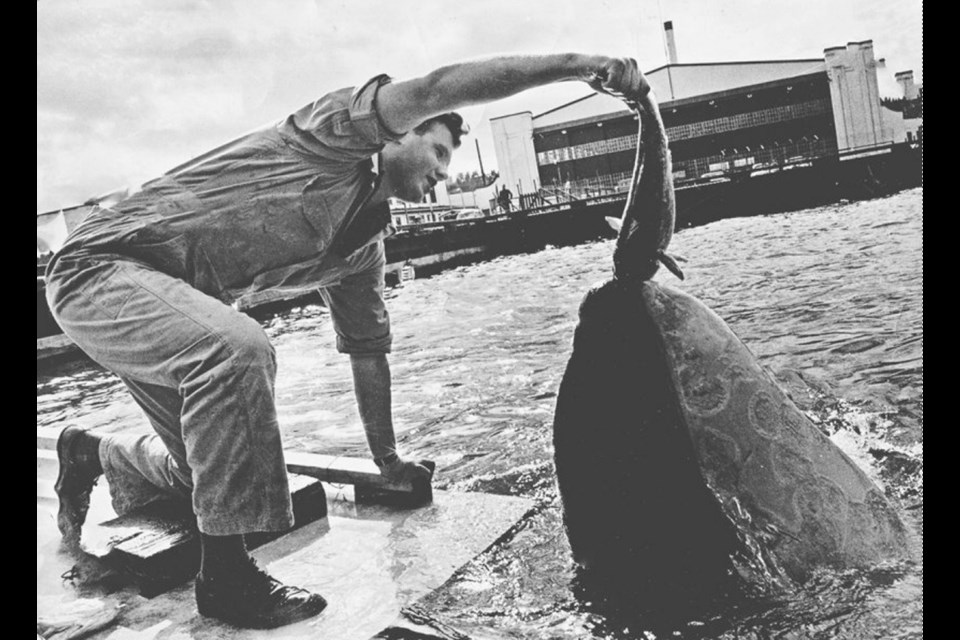The Killer Whale Who Changed the World
By Mark Leiren-Young
Greystone/David Suzuki Institute, 188 pp., $29.95
They set out to kill a whale, but captured one instead. The orca they took to Vancouver became known as Moby Doll, and as it was displayed to the public and examined by scientists and others, it transformed our thinking of whales.
Moby Doll was captured in July 1964 off Saturna Island. The idea had been to kill a whale so it could serve as a model for an accurate replica. When whales came into view, a harpoon gun was fired at one of them.
The whale, the smallest of the group, was not killed, but hooked by the spear and left unconscious. Two other whales propped up the injured whale to ensure it did not drown — the first sign that these whales were not the vicious killers that they had been made out to be.
The first instinct of the hunters was to finish the job, but as they watched the whales, they decided that they could not to do that. Instead, they carefully led the whale across Georgia Strait, using the hook in its body to force it along. They took Moby Doll to a temporary enclosure at a drydock in North Vancouver, a home until the Vancouver Aquarium could prepare something more permanent.
Moby Doll did not live long in captivity, just a matter of months. He was on public display for just one day, but he drew 20,000 visitors, giving all of them a chance to see that a whale considered to be a bloodthirsty monster was not that at all.
He was instrumental in changing public perception of the whales we once called killers and now call orcas. He was instrumental in changing our thinking; no longer should these whales be hunted as a matter of course, they should be protected and appreciated.
In short, Moby Doll was an agent of change. Everything that has happened since, from the census efforts that have counted the number of orcas, to the whalewatching boats, to the capture of whales for public entertainment and the subsequent move away from these spectacles, can be traced back to that July day off Saturna Island.
The Killer Whale Who Changed the World, by Mark Leiren-Young, is a fascinating look at Moby Doll and his impact. It is a brilliant piece of work, one of the most engaging and readable works of British Columbia history in years. That Leiren-Young is a master with words is evident on every page.
His article for the Walrus magazine about Moby Doll, the basis for this book, was a finalist for a National Magazine Award, and he won a Jack Webster award for a radio documentary on the whale. There is more to come; he is working on a feature-length film documentary on Moby Doll.
In 1964, we did not have today’s appreciation for our non-human neighbours. The indifference of the day was based on ignorance and driven by a desire to see everything in terms of good versus evil, white hate versus black, humans against monsters.
That thinking has been transformed, and we should all be grateful. All creatures great and small have a place, and make our appreciation for where we live much stronger.
Thank Moby Doll for that change in thinking. They tried to kill the whale, but cried when he died a few months later. Moby Doll’s short time in captivity really did change the world.
The reviewer is the editor-in-chief of the Times Colonist.
Mark Leiren-Young will speak about The Killer Whale Who Changed the World at 7 p.m. Monday at Bolen Books in the Hillside shopping centre.



